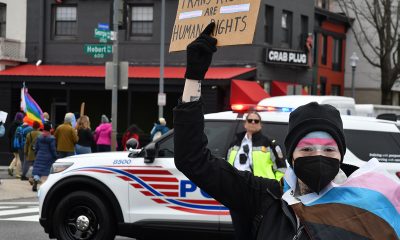Arts & Entertainment
Oprah’s gayest shows
Talk show legend never shied from LGBT topics. Her last episode aired on Wednesday.

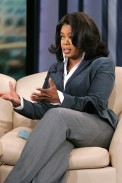
Oprah, even in her early years, never shied from LGBT topics on her eponymous show, which ended its run this week. (Photo courtesy of Harpo Productions)
Everybody knows Oprah ended her eponymous talk show this week, but one thing missed in the mainstream hoopla was how often and unabashedly she dealt with LGBT topics during her 25-year run.
Oprah and her flock have consistently denied speculation that she herself may be gay. Gay OWN talk show host Brad Lamm told the Blade in March the question has lingered so long he finds it “offensive.” Winfrey confessed frustration over the issue to Barbara Walters in a 2010 interview because its persistence, she said, implied dishonesty on her part.
A look back through the topics of the show’s 4,561 episodes reveals a bounty of LGBT guests, perhaps none more memorable than a 1987 landmark episode that found Oprah visiting Williamson, W.Va. (population: 5,600) to interview Mike Sisco, a gay man who’d contracted AIDS while living in Dallas and who’d returned home to his family in West Virginia.
Word had spread in the small town that Sisco had AIDS and hysteria ensued when he went swimming in a public swimming pool. Sisco told Oprah residents were fleeing “like people do in those science fiction movies when they see Godzilla in the street or something.” The mayor closed the pool and Sisco was ostracized.
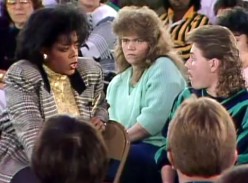
Oprah interviews the late Mike Sisco in his hometown of Williamson, W.Va., in 1987. Sisco, who was gay and had AIDS, caused hysteria by swimming in a public pool. (Photo courtesy of Harpo Productions)
It was the height of AIDS hysteria when confusion about how the disease could be contracted was at its peak. Sisco said he agreed to do the show to help educate the public. Rumors were running rampant in the town that Sisco had been seen spitting on food at the local McDonald’s and on produce at a grocery store.
“Mike Sisco’s story is heartbreaking because it shows the reactions/actions of human beings when fear takes hold, when ignorance is abundant and when there is a mob mentality,” blogger Lola Nicole wrote. “[He] went to be with his family so they could care for him, so he could feel loved. He got exactly the opposite.”
Last September, as Oprah started her final season, she visited Sisco’s three sisters, Patricia, Tina and Anna. Sisco died in 1996 and controversy surrounded him until the bitter end — a family fight ensued about where he could be buried. In the ensuing years, his sister Anna had come out as a lesbian.
Oprah also interviewed several of the residents who’d been against Sisco’s presence in the original episode. Some said they’d wished they’d been more compassionate.
Oprah said her goal in doing both episodes was to remind people to be compassionate.
“I think that is the complete message of this whole series we did here today and 23 years ago,” she said at a press conference after the 2010 episode. “I understand people’s fear because in 1987 we still didn’t know everything and it’s understandable that people would have questions and what was represented here in Williamson really was a microcosm for the country. We used Williamson as a symbol for what was going on in the rest of the country.”
Other famous LGBT-related episodes include:
- Gay pianist Liberace made his final public appearance on the show on a Christmas Day episode in 1986. He died about six weeks later of AIDS-related complications.
- Ellen DeGeneres came out on a 1997 episode. Oprah also appeared on her sitcom as her therapist.
- A 2003 episode that had run without incident initially, was rerun in 2005 and caused a major controversy because a guest gave an explanation of rimming, albeit in a hetero context.
- A landmark 2004 episode called “A Secret Sex World: Living on the Down Low” brought the largely black phenomenon of married men having sex with men on the side to light. It became part of the national lexicon.
- Last November, singer Ricky Martin discussed being a gay father.
- In March, “Family Ties” actress Meredith Baxter discussed being a lesbian.
- A January episode was devoted to coming out.
- In May, 2008, Oprah interviewed Cher and Tina Turner at Caesar’s Palace in Las Vegas. Oprah idol Diana Ross also made a handful of appearances on the show.
- An October 2006 episode was called “Wives Confess They are Gay.”
- A March, 2009 episode was called “Women Leaving Men for Other Women.”
- The “Will & Grace” cast convened in May 2006 for a farewell episode.
- In July, 2010 former high school football quarterback Kimberly Reed discussed her late ‘90s sex change. Her documentary was shown at Reel Affirmations.
- And just weeks ago, Oprah interviewed Chaz Bono about his transition and new documentary and book.
a&e features
Local, last-minute holiday gift ideas
Celebrate the season while supporting area businesses

The DowntownDC Holiday Market is bustling. Union Station is decked out with its annual Christmas tree. Washingtonians have wrapped their houses and apartment balconies with festive lights and holiday decorations. The holiday season is here. And with stockings to fill and empty space under the tree, Washington’s local shops and artists have plenty to offer.
Show your LGBTQ and D.C. pride with the Washington Blade’s annual holiday gift guide.
To embrace the holiday buzz: The Blanco Nwèl cocktail from Alchy Cocktails. This Caribbean eggnog is one of Alchy Cocktail’s seasonal holiday cocktails. The flavor profile is similar to coquito, a traditional Puerto Rican Christmas drink with a coconut base. As a queer and Caribbean-owned business, Alchy Cocktails has been based out of Washington since 2021. Blanco Nwèl is available in both cocktail ($24) and mocktail ($12) online and at a variety of holiday markets, including the Tingey Plaza Holiday Market, the Flea Market at Eastern Market, Union Station’s Main Hall Holiday Market, and more. ($24)

A spicy bite: Gordy’s Cajun Okra from Salt and Sundry. These spicy, tangy pickles pull on Southern Cajun-style flavors, packing a punch with paprika, cayenne, and more. Gordy’s is an LGBTQ-owned and Washington-based brand, making this gift an opportunity to support a local LGBTQ business straight from the jar. This pantry staple is available on Salt & Sundry’s website and at its locations in Union Market, Logan Circle, and its Georgetown holiday pop-up store. ($14)


To celebrate Washington pride: The DC Landmark Tote Bag from The Neighborgoods. Native Washingtonians, visitors, friends and family alike will find something to love about this Washington-themed tote bag. Food trucks, the 9:30 Club, the Metro logo and pandas from the National Zoo are just some of the city’s landmarks depicted across the tote in a red, white, and blue color palette. The tote is a part of the DC Landmarks collection, which donates 10 percent of its sales to the American Civil Liberties Union. The Neighborgoods itself is a local, woman-owned business built out of a passion for screen-printing in 2013. The 100 percent cotton canvas tote is for sale online or at the DowntownDC Holiday Market. ($22)
To give friends and family their flowers: The Flowers Bandana from All Very Goods. This 100 percent cotton bandana was designed in Washington and hand printed in India. Its uniqueness comes in being covered with the faces of Black women, representing a “love letter to all women but especially Black women,” according to All Very Goods. The Black woman-owned and operated business, based out of Northwest Washington, has a mission to celebrate diversity and representation through its products. The bandana intends to give Black women their “flowers.” The Flowers bandana is available for purchase online. ($24)

To unlock culinary creativity: The Curious Chef Gift Collection from Each Peach Market. This customizable collection of kitchen oddities — ranging from tinned fish to chili oil — is a quirky gift for the most inventive chefs. The collection is available in a Standard Santa, Extra Goodies and Super Holiday Size for up to $165. The Washington-based market, founded in 2013, permits customers to make the collection special by specifying what unique ingredients are packaged, including products made by local or LGBTQ brands. Each Peach Market offers assembly and pick up in-person at its Mount Pleasant shop and also offers local delivery and nationwide shipping via its website. ($85)

To give a touch of sweetness: The DC Landmark Chocolate Covered Oreo Holiday Cookies from Capital Candy Jar. Wrapped in a festive red bow, this box of nine cookies embraces love for Washington and the holiday season in one. Among the dark and milk chocolate covered cookies are images of the U.S. Capitol, the White House, the Lincoln Memorial, the Jefferson Memorial and festive hollies. The treat, packaged in a Hill East facility just a few blocks from the Capitol, is available for purchase online and at the DowntownDC Holiday Market. ($23.95)


To celebrate queer gaming: Thirsty Sword Lesbians from Labyrinth Games & Puzzles. This roleplaying game embraces lesbian culture by unlocking a world of swords, romance, and battle. Ideal for group settings, the book presents a system of world building and character identities that are best brought to life by creative minds. Labyrinth, which has been a local Washington business for more than 15 years, celebrates non-digital fun through games and puzzles that connect the community. This gift is offered online and at Labyrinth’s Capitol Hill location. ($29.99)
To make a bold statement: The “Resist” T-shirt from Propper Topper. This locally screen-printed black tee features the Washington flag designed within a raised fist, symbolizing both Washington pride, and political resistance. The shirt is made exclusively by Propper Topper, a local Washington business that evolved from a hat shop to a gift store since opening in 1990. The tri-blend unisex shirt is available both for pickup at Propper Topper’s Cathedral Heights location and shipping via the online site. ($32)
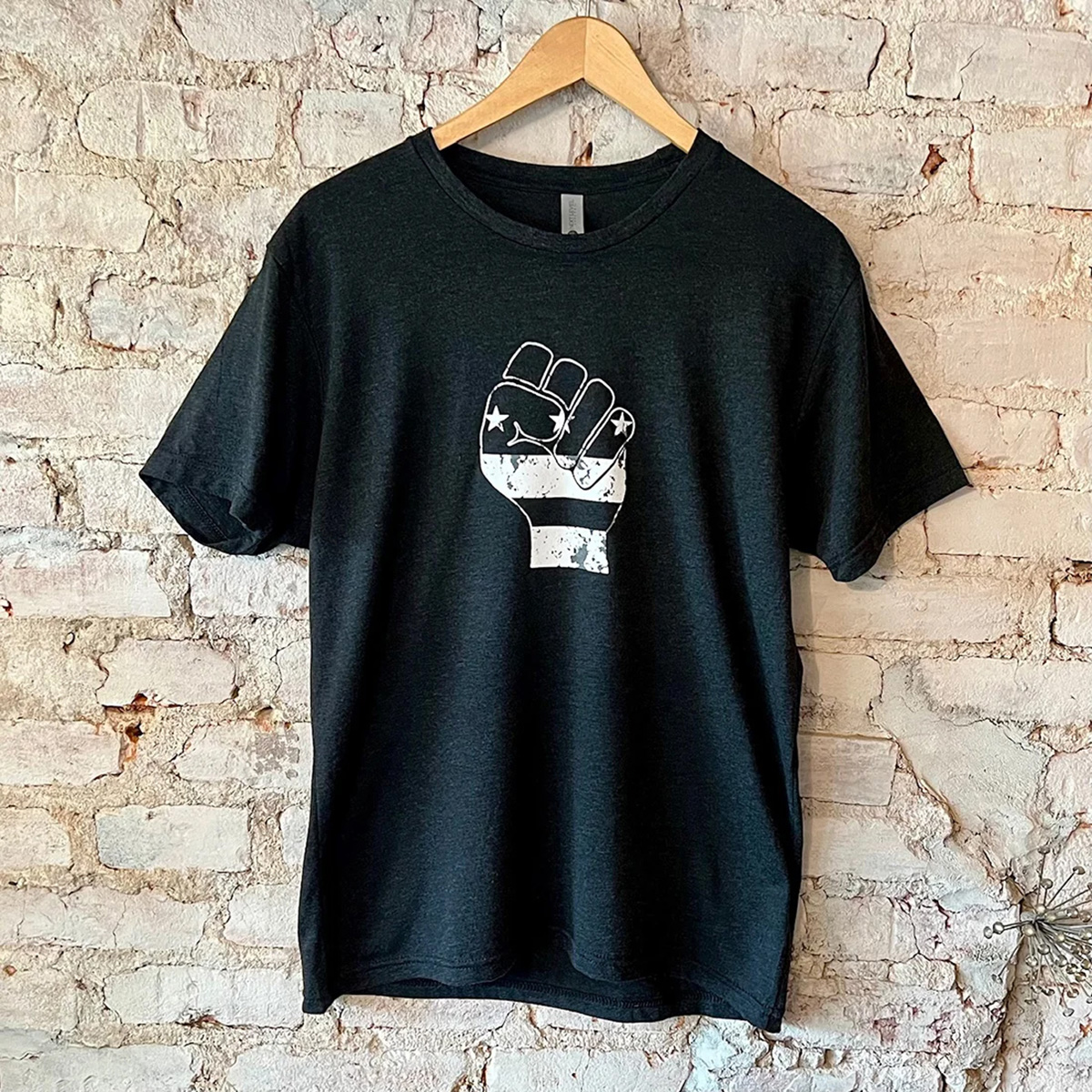
To keep it c(g)lassy: The Glass Ball earrings from Blue Moon Aquarius. Gifting can rarely go wrong when it comes to a new pair of earrings. The unique statement earrings — made of polymer clay, glass, and 18k gold plating over surgical steel — are hand cut, sanded and assembled in Washington, meaning each set is unique. Blue Moon Aquarius, a local brand, is known for its small batch jewelry and home decor designed with clay materials. Available in oxblood, hunter green, lavender, and bluestone color palettes, these earrings are available for purchase on Blue Moon Aquarius’ website and at the DowntownDC Holiday Market. ($48)

To elevate a holiday tea or charcuterie party: The Honey Flight: Tea Lover’s Selection from BannerBee. This local honey company presents the ideal gift to make cozying up with a cup of tea slightly more special. The Honey Flight contains three types of raw wildflower honey infused with fair trade Ugandan vanilla bean, chai spices, and locally sourced lemon thyme herb. The gift is also an opportunity to uplift a family company based in the Mid-Atlantic that offers all-natural, sustainable products. The flight is available online, at the DowntownDC Holiday Market or at the Arlington Courthouse and Dupont Farmers’ Markets. ($36)

For Baltimore shoppers: If you’re in Charm City, don’t miss Balston Mercantile, opened by a gay couple in June. Their gorgeous shop in the Hampden neighborhood offers an array of unique, upscale finds, from barware and artwork to cookbooks and home decor and more. (849 W. 36th St.)
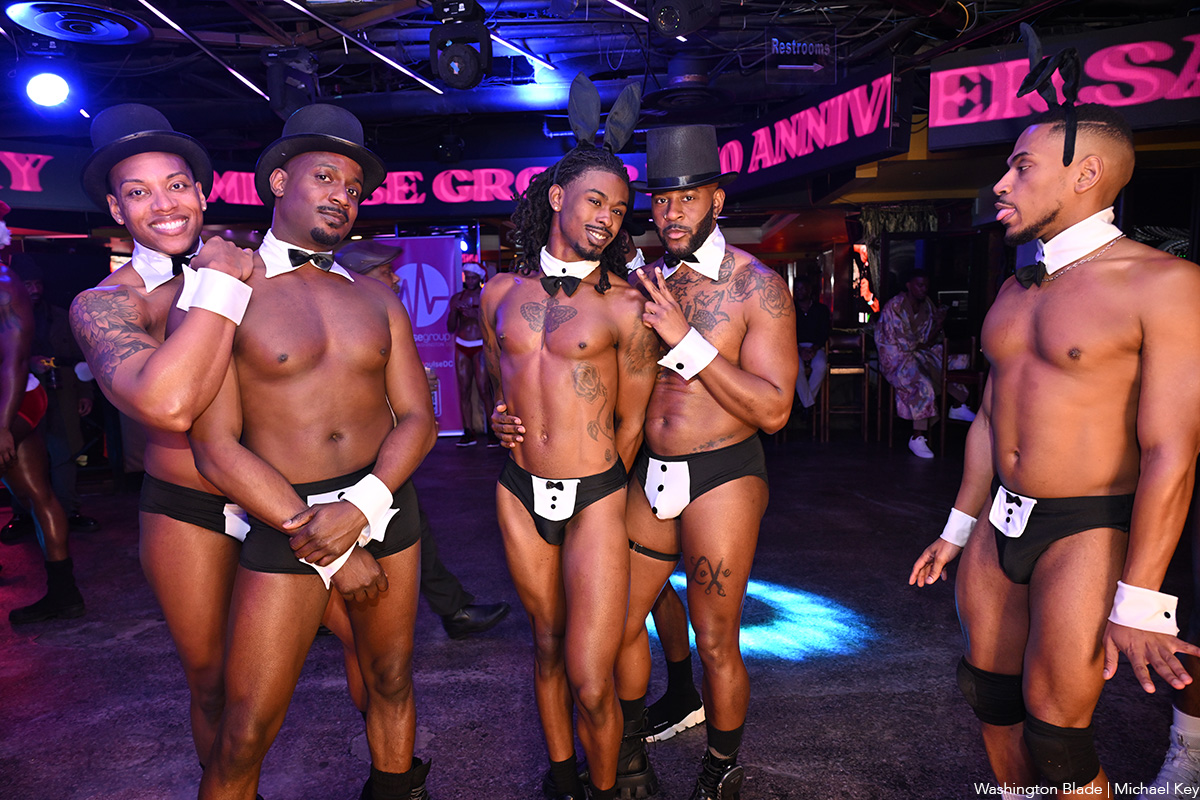
Impulse Group DC held “10’s Across the Board: A Celebration of 10 Years” at Bravo Bravo (1001 Connecticut Ave., N.W.) on Sunday, Dec. 14. Impulse Group DC is a volunteer-led 501(c)(3) and affinity group of AIDS Healthcare Foundation dedicated “to engaging, supporting, and connecting gay men” through culturally relevant health and advocacy work.
(Washington Blade photos by Michael Key)
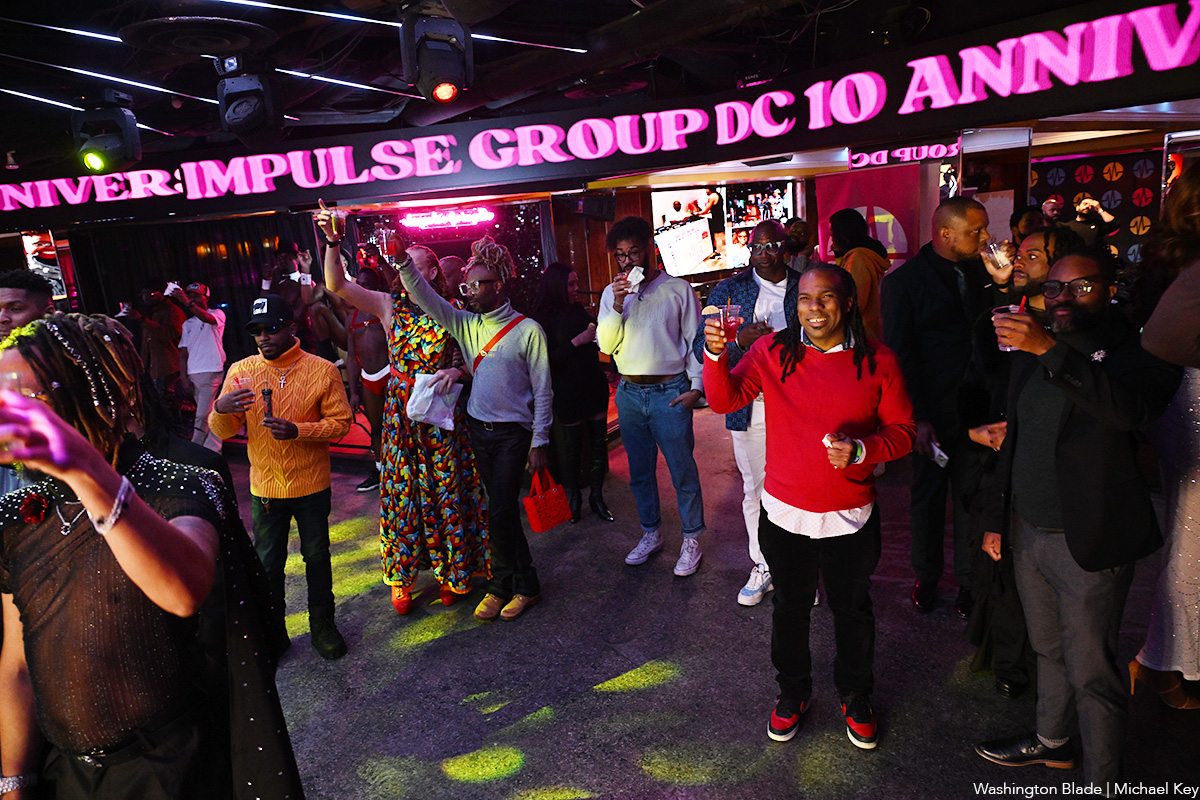
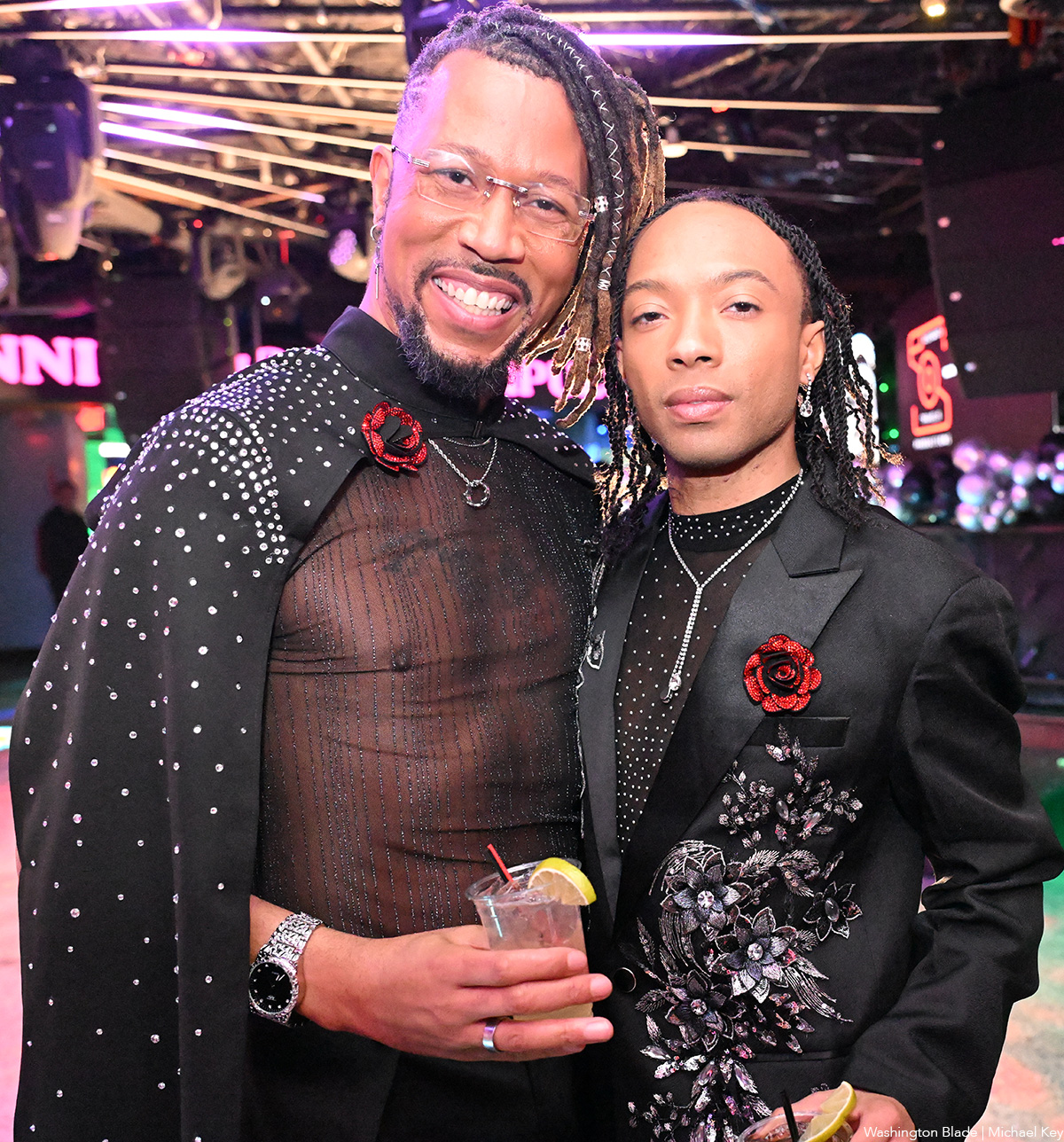
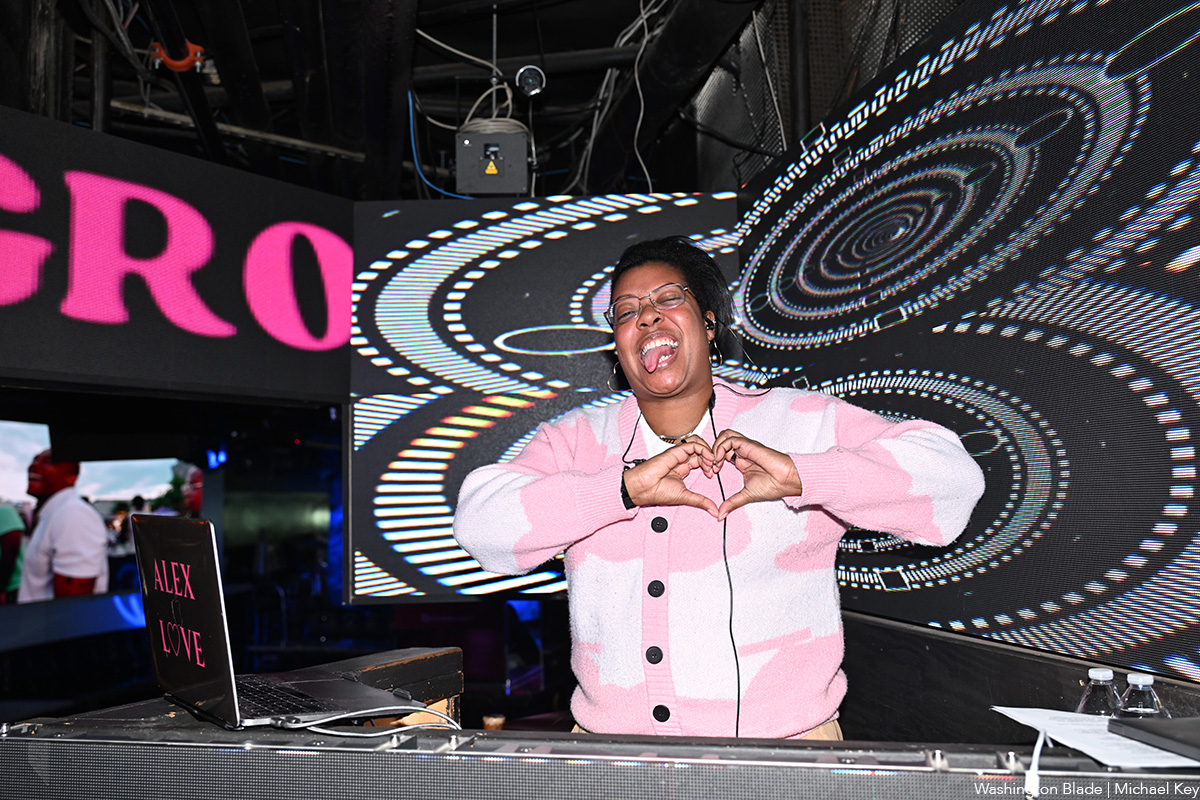
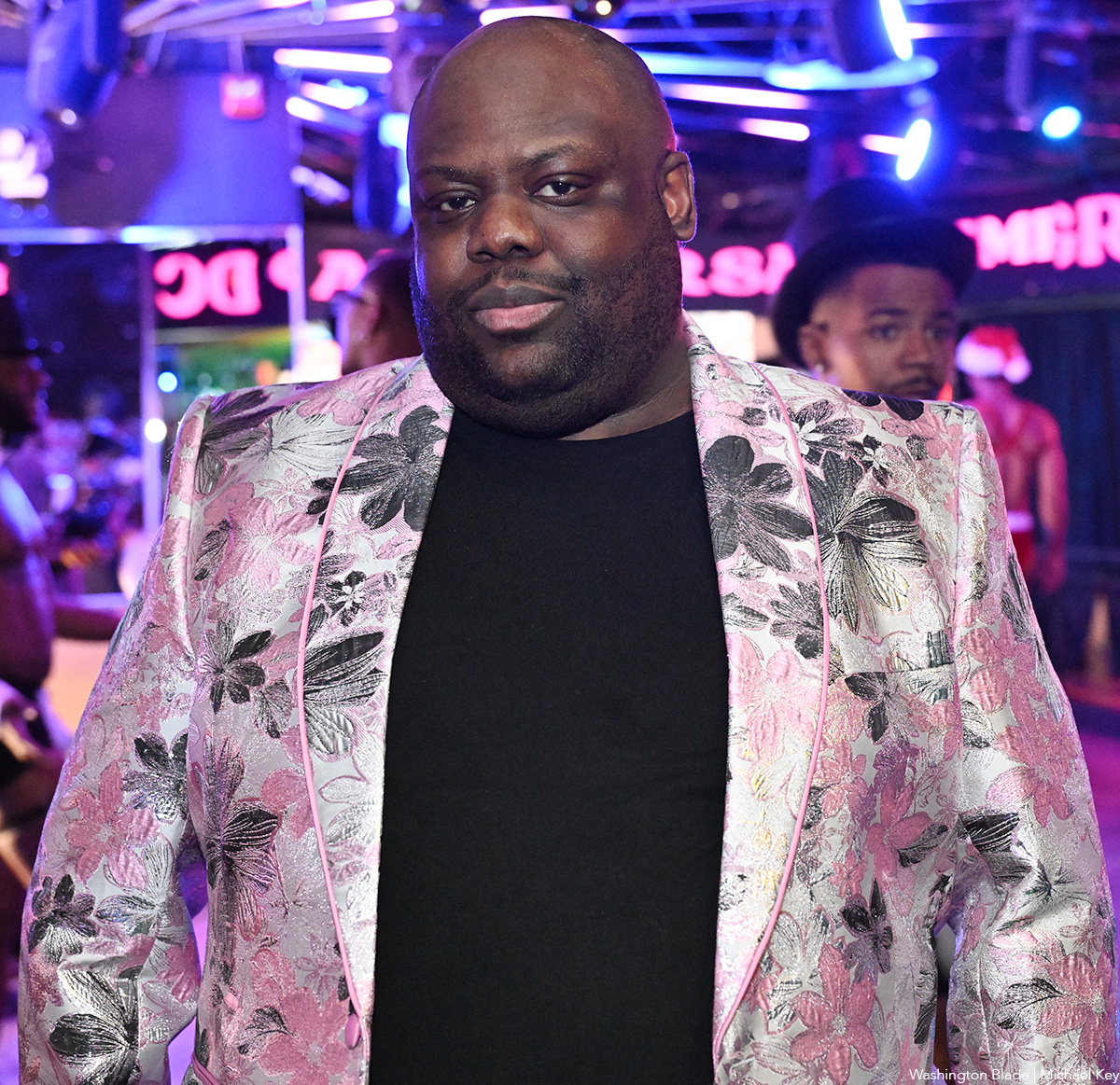

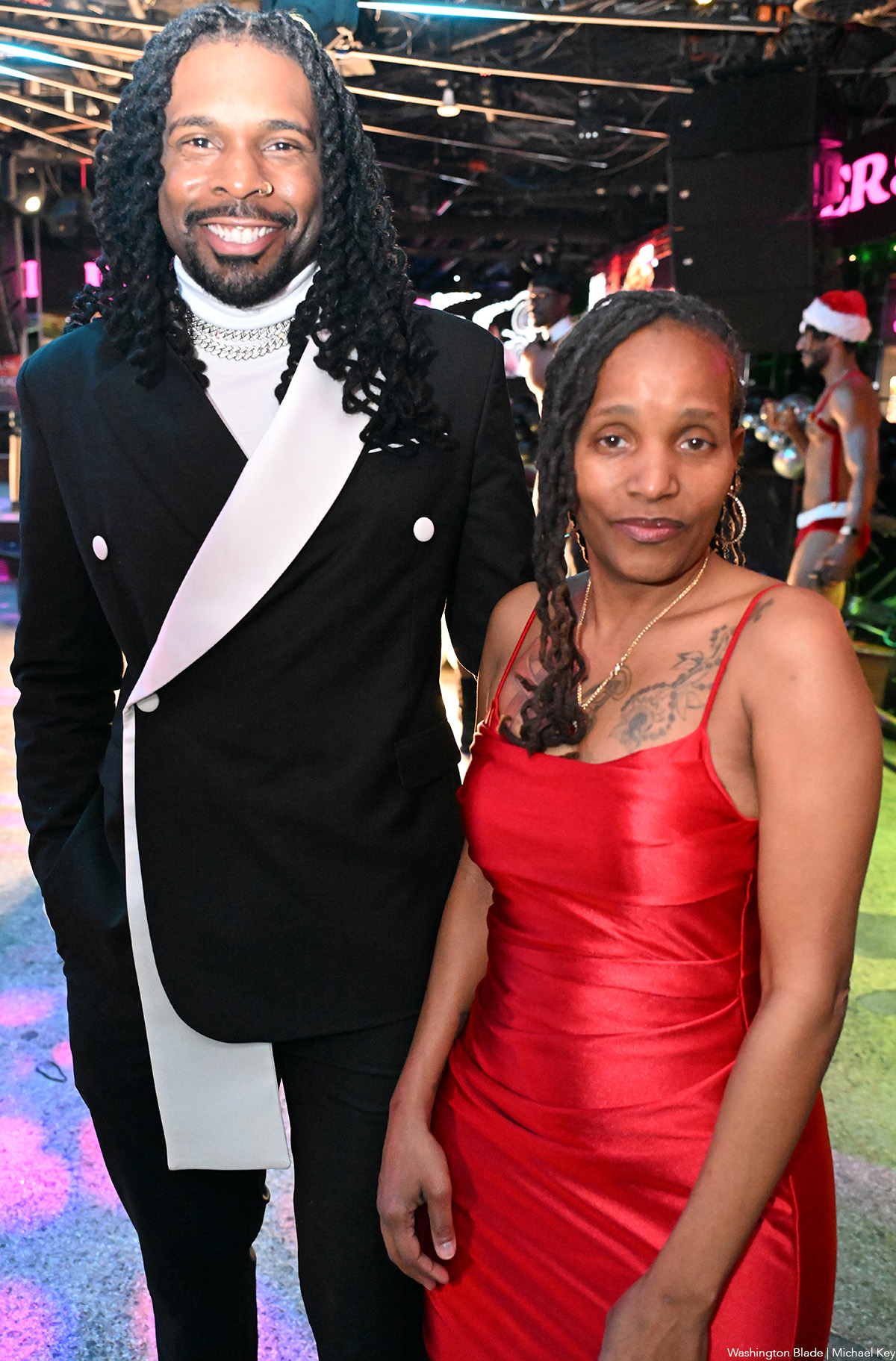
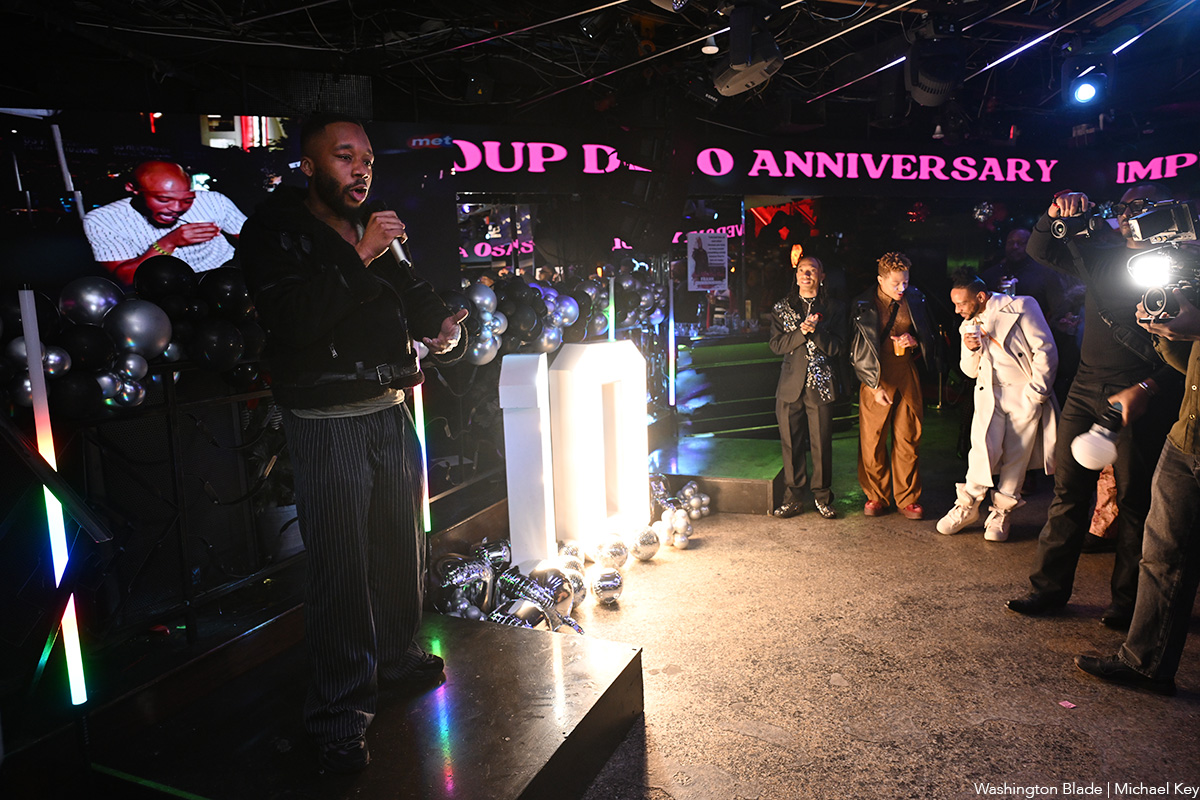
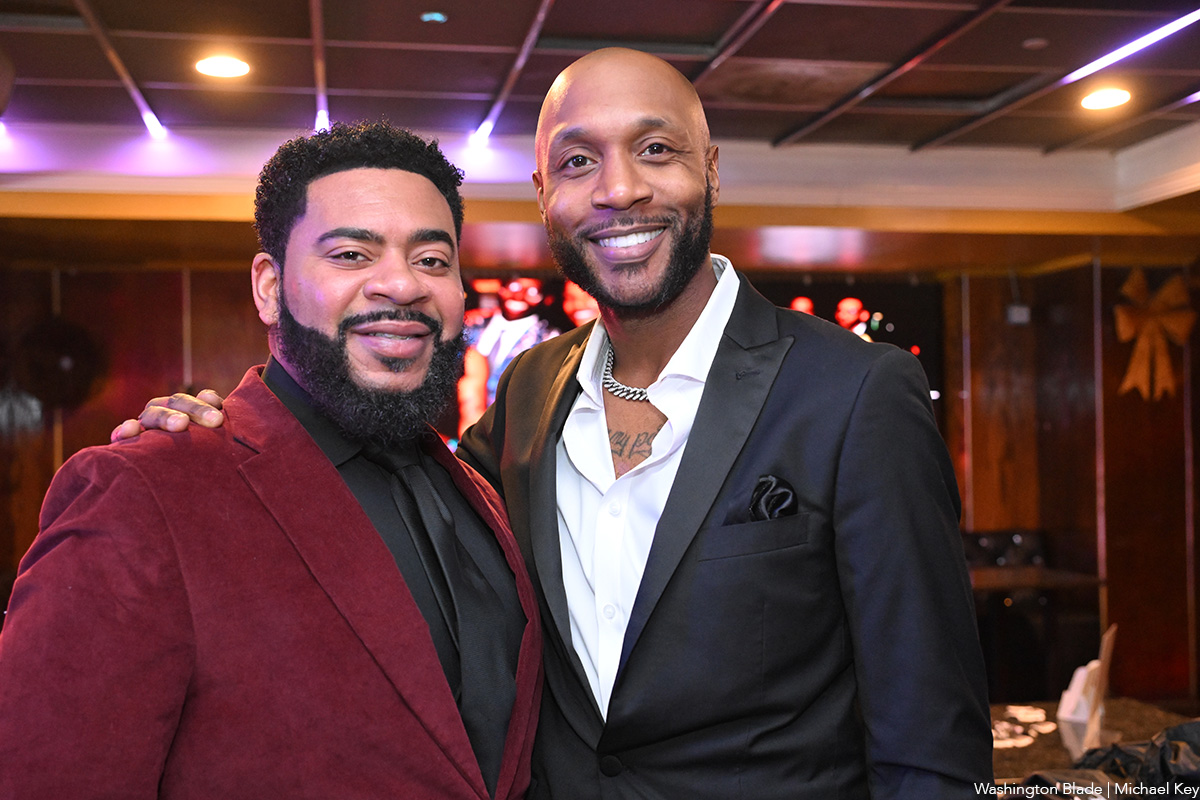
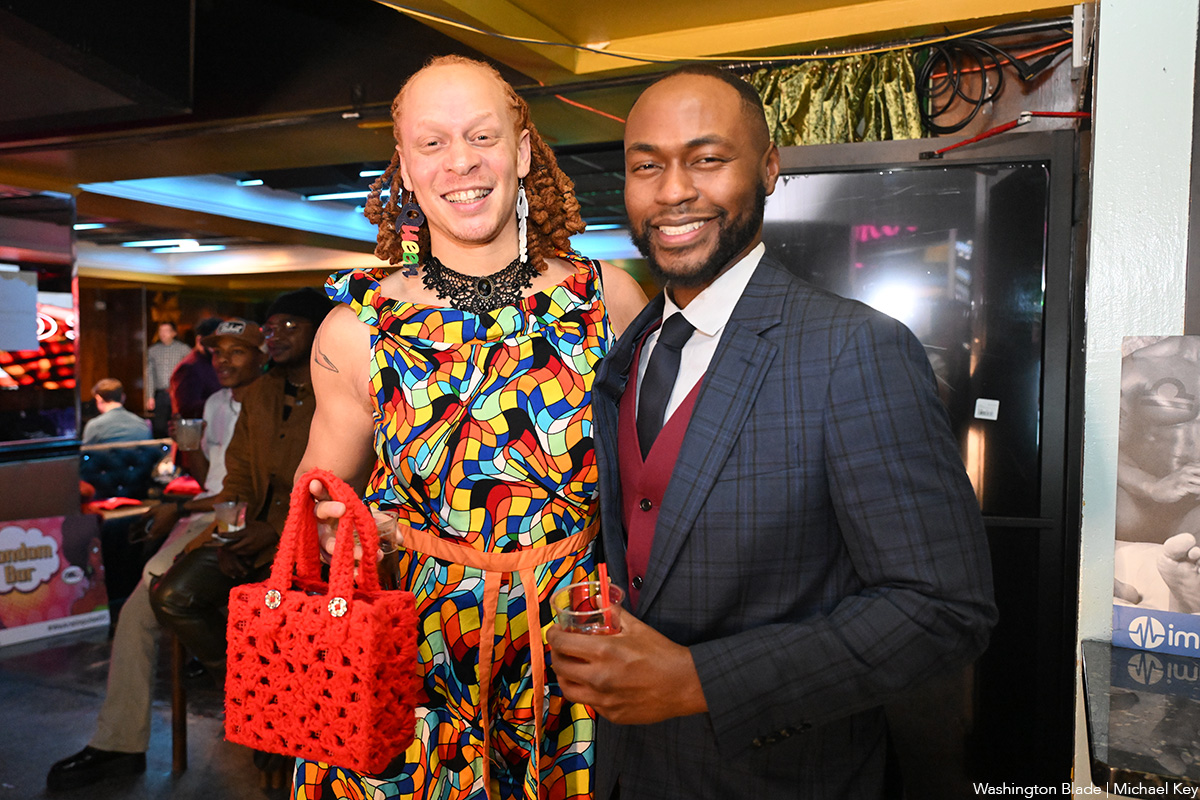
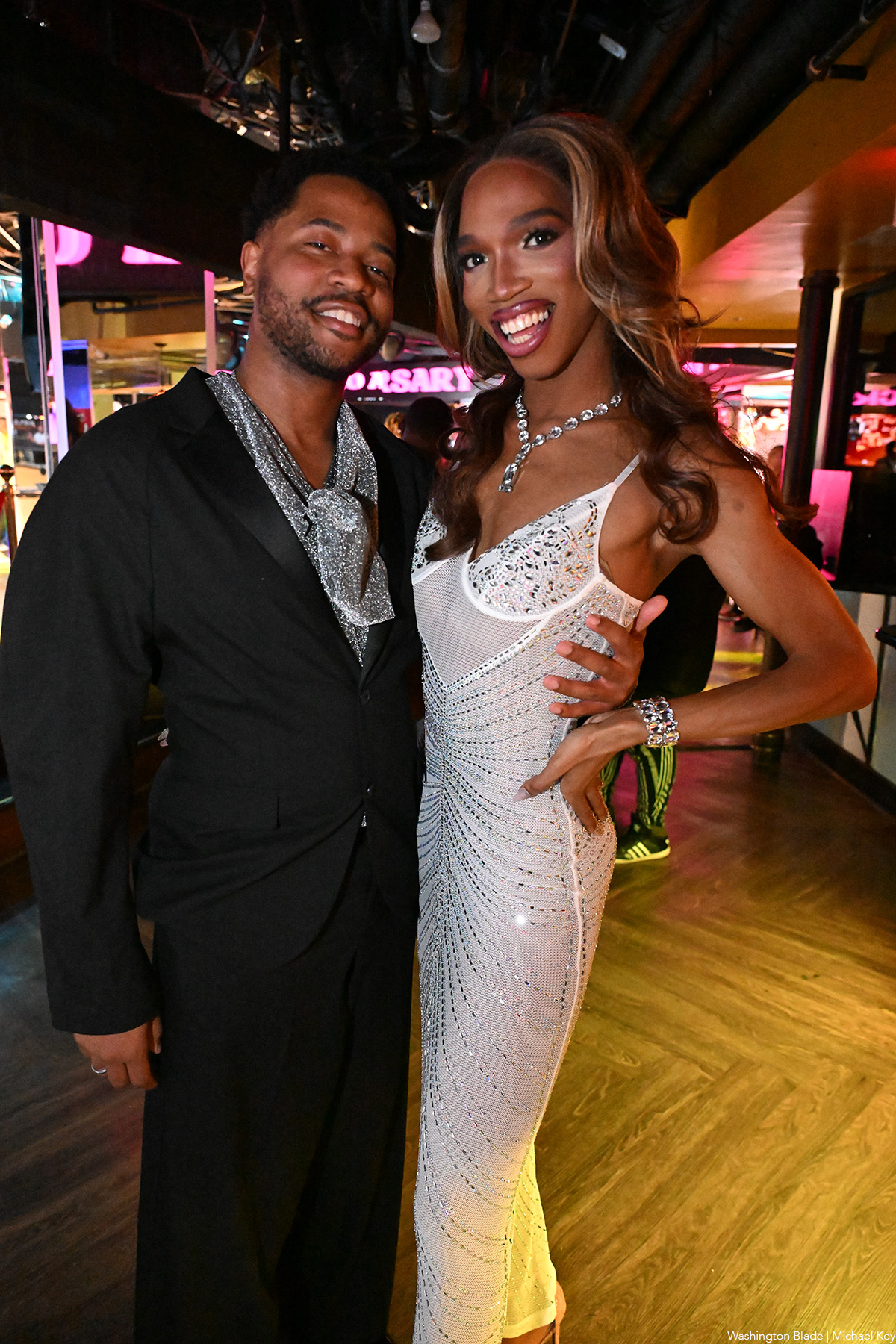
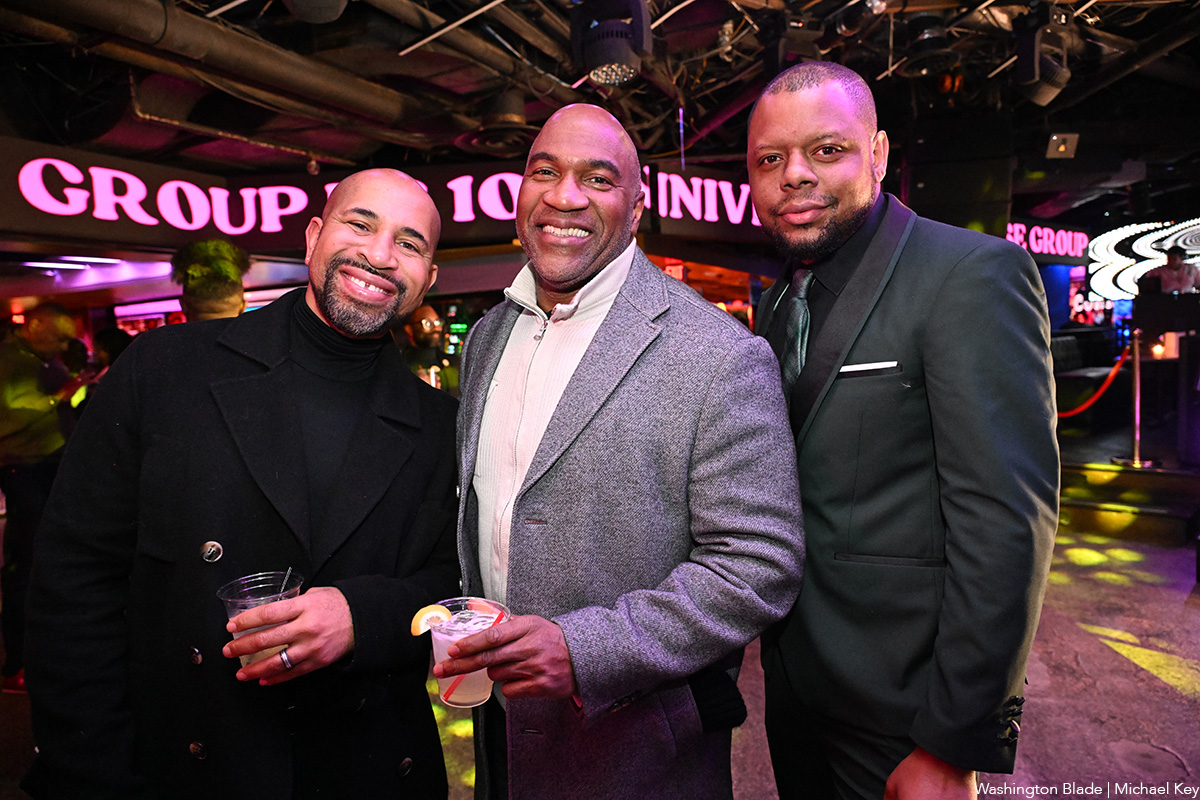
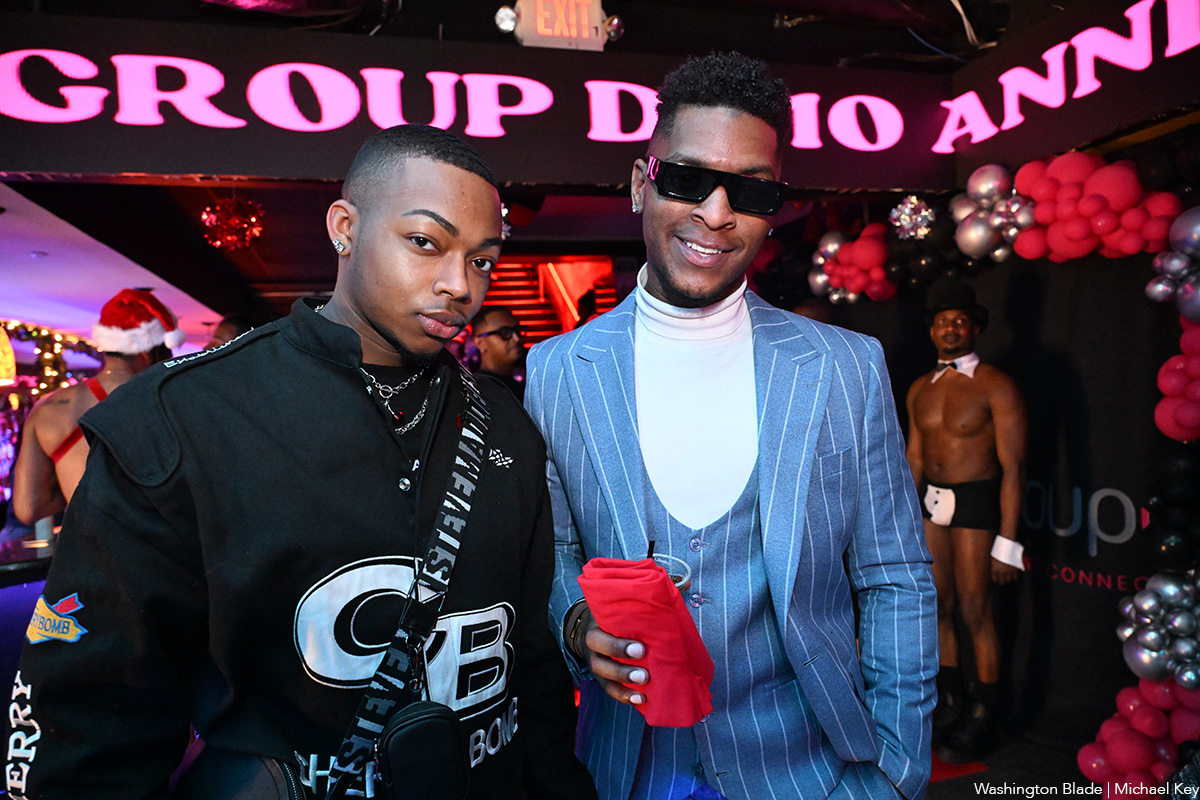
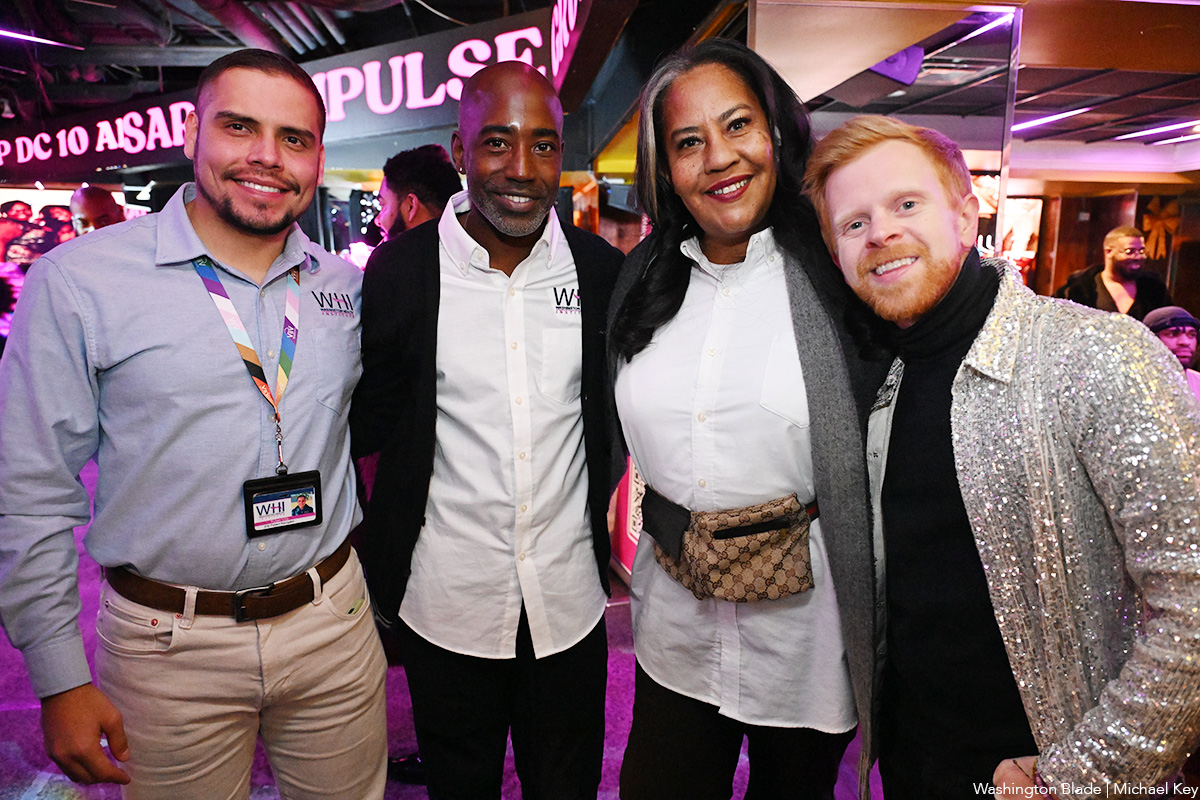

Rob Reiner, most known for directing untouchable classics like “The Princess Bride,” “Misery,” “When Harry Met Sally…,” and “Stand by Me,” died Dec. 14 alongside his wife, Michele Singer Reiner, in their Los Angeles residence. While investigations are actively underway, sources have told PEOPLE Magazine that the pair’s son, Nick Reiner, killed his parents and has been taken into custody.
Reiner was a master of every genre, from the romantic comedy to the psychological thriller to the coming-of-age buddy movie. But in addition to his renowned work that made him a household name, Reiner is also remembered as a true advocate for the LGBTQ community. In 2009, Reiner and his wife co-founded the American Foundation for Equal Rights, helping fight against California’s Prop 8 same-sex marriage ban. They were honored at the 2015 Human Rights Campaign Las Vegas Gala.
In a statement, HRC President Kelley Robinson said: “The entire HRC family is devastated by the loss of Rob and Michele Reiner. Rob is nothing short of a legend — his television shows and films are a part of our American history and will continue to bring joy to millions of people across the world. Yet for all his accomplishments in Hollywood, Rob and Michele will most be remembered for their gigantic hearts, and their fierce support for the causes they believed in — including LGBTQ+ equality. So many in our movement remember how Rob and Michele organized their peers, brought strategists and lawyers together, and helped power landmark Supreme Court decisions that made marriage equality the law of the land — and they remained committed to the cause until their final days. The world is a darker place this morning without Rob and Michele — may they rest in power.”
Reiner’s frequent collaborators have also spoken out as the industry is in mourning, including figures like Ron Howard and John Cusack.
A joint statement from Jamie Lee Curtis and Christopher Guest (who starred in Reiner’s “This is Spinal Tap”) reads: “Christopher and I are numb and sad and shocked about the violent, tragic deaths of our dear friends Rob and Michele Singer Reiner and our ONLY focus and care right now is for their children and immediate families and we will offer all support possible to help them. There will be plenty of time later to discuss the creative lives we shared and the great political and social impact they both had on the entertainment industry, early childhood development, the fight for gay marriage, and their global care for a world in crisis. We have lost great friends. Please give us time to grieve.”
While attending the 2019 HRC Los Angeles Dinner, Reiner spoke out about the need for equality: “We have to move past singling out transgender, LGBTQ, black, white, Jewish, Muslim, Latino. We have to get way past that and start accepting the idea that we’re all human beings. We’re all human beings, we all share the same planet, and we should all have the same rights, period. It’s no more complicated than that.”
-

 Politics2 days ago
Politics2 days agoLGBTQ Democrats say they’re ready to fight to win in 2026
-

 District of Columbia1 day ago
District of Columbia1 day agoBrian Footer suspends campaign for Ward 1 D.C. Council seat
-

 Chile4 days ago
Chile4 days agoFar-right José Antonio Kast elected Chile’s next president
-

 Celebrity News4 days ago
Celebrity News4 days agoRob Reiner, wife killed in LA home



